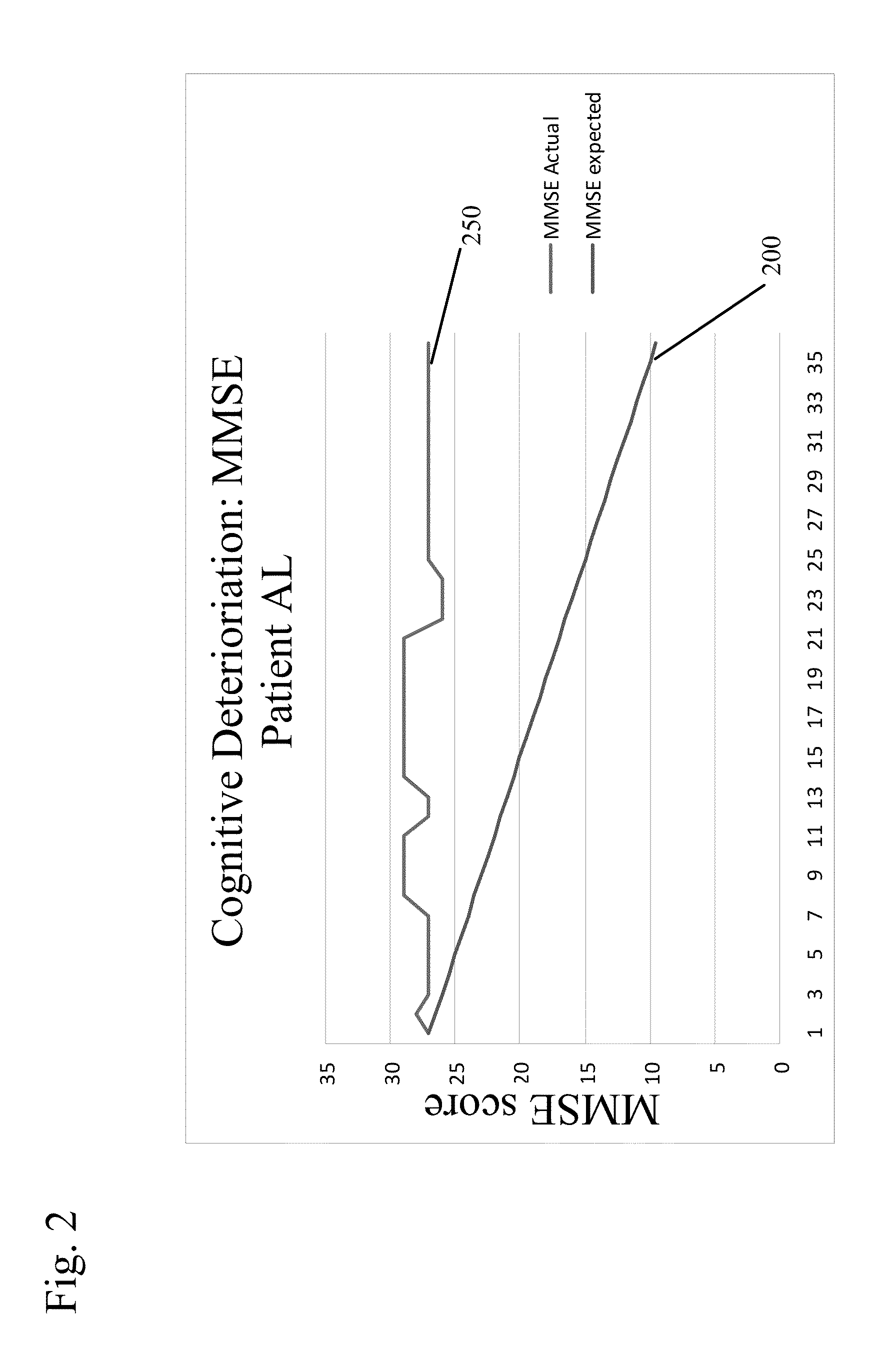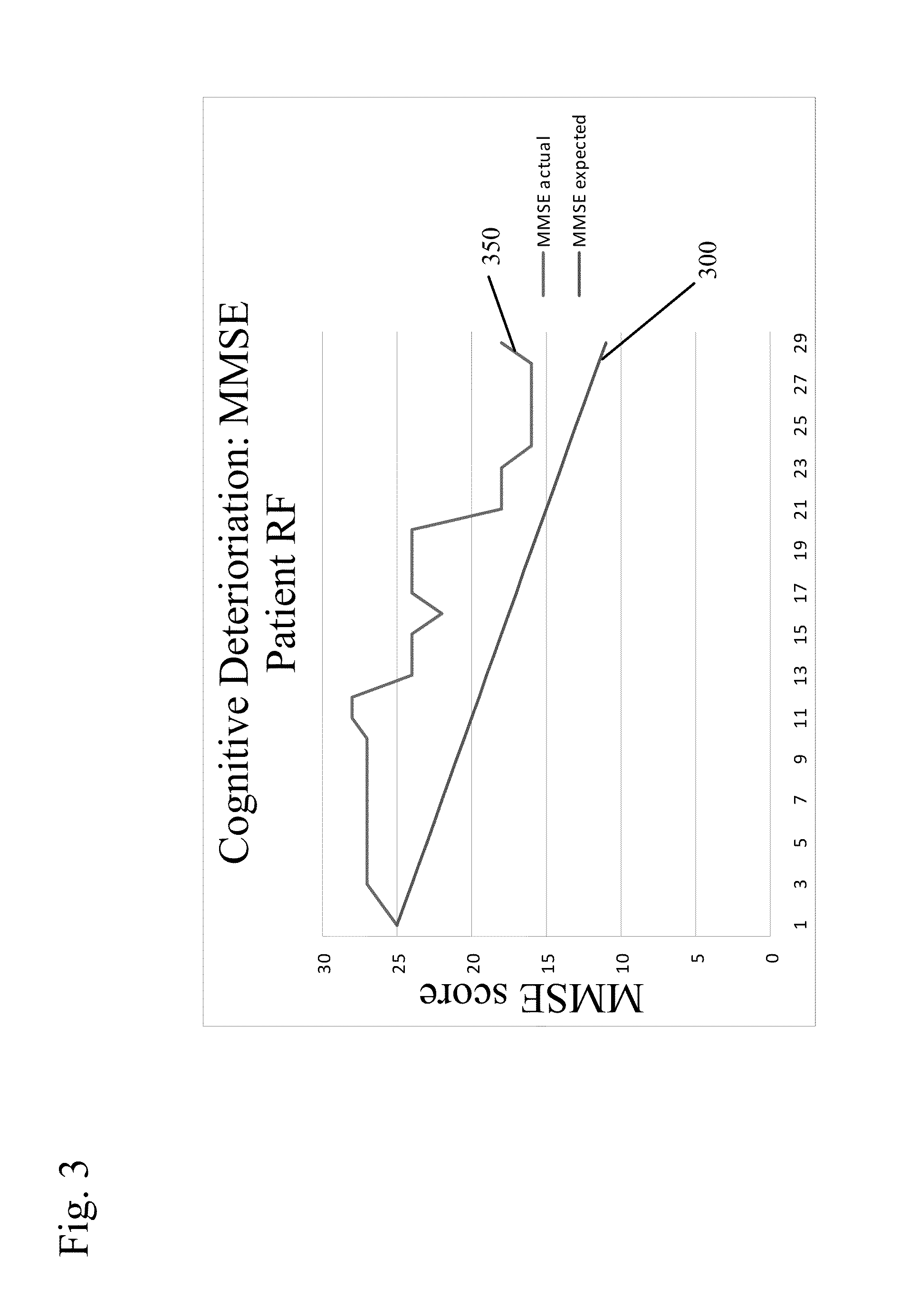Combined Acetylcholinesterase Inhibitor and Quaternary Ammonium Antimuscarinic Therapy to Alter Progression of Cognitive Diseases
a technology of acetylcholinesterase which is applied in the field of combined acetylcholinesterase inhibitor and quaternary ammonium antimuscarinic therapy to alter the progression of cognitive diseases, can solve the problems of disease modification and slow down in disease progression, and achieve the effects of preventing or substantially ameliorating the undesired side effects of acetylcholinesterase inhibitors, maximizing the beneficial
- Summary
- Abstract
- Description
- Claims
- Application Information
AI Technical Summary
Benefits of technology
Problems solved by technology
Method used
Image
Examples
example 1
Incontinence Improvement
[0076]The patients only identified by numbers below were administered a therapeutically efficacious amount of glycopyrrolate (0.5 mg to 2 mg twice daily) and monitored for the amount of time indicated.
PatientTime of treatment (months)′86410′1057′8147′1248′2918′5478′7954′1046′2234′9704′5688′2556′2385
[0077]Concurrent with the administration of glycopyrrolate, each of these patients was able to be treated with the maximum effective dosage (10 mg / day) of the acetyl-cholinesterase inhibitor donepezil, which they were unable to tolerate before treatment with glycopyrrolate because of the presence of the undesired side effects noted above. The administration of glycopyrrolate enabled the clinician to administer a dosage of acetyl-cholinesterase inhibitor that provided a measurable cognitive benefit to the patient.
example 2
Cognitive Function vs. Incontinence
[0078]In this trial, patients were administered either of the non-quaternary ammonium anti-cholinergic muscarinic agents tolterodine (4 mg / day) or oxybutinin (5-20 mg / day), as indicated. The patients were given a Mini-Mental State Examination (MMSE) to determine their cognitive function after being treated with either of these two drugs. The MMSE is a conventionally used test with patients suspected of exhibiting cognitive impairment. The MMSE measures an individual's cognitive ability across several domains of cognitive function. It is an acknowledged standard in the medical field and is appropriate for clinical, office based testing. It is scored from 0 to 30, with score of 30 indicating normal cognitive function.
[0079]These patients were then given a therapeutically efficacious amount of glycopyrrolate (2 mg / day) in place of the non-quaternary ammonium anti muscarinic agent and evaluated again using the MMSE test. Their incontinence control was ...
example 3
Rivastigmine with Glycopyrrolate
[0082]In this study, six patients with acute delirium were hospitalized and treated at Rochester (N.Y.) General Hospital.
[0083]Patient a) Age 83. Diagnosis: Acute delirium, respiratory failure. Condition severe enough to warrant treatment in Intensive Care Unit (“ICU”). Patient was treated with a combination of rivastigmine (1.5 mg titrated to 3 mg, orally, twice each day) and glycopyrrolate (1 mg twice each day, orally). Her cognitive function improved significantly enough that she was to be discharged to a skilled nursing facility upon resolution of her respiratory issues.
[0084]Patient b) Age 77. Diagnosis: Acute delirium, urinary incontinence. Upon treatment with 1.5 mg titrated to 3 mg orally, twice a day, with rivastigmine along with 1 mg, twice a day, orally, of glycopyrrolate, the patient's cognitive function improved significantly enough to allow discharge to a skilled nursing facility.
[0085]Patient c) Age 86. Diagnosis: Acute delirium, Parkin...
PUM
| Property | Measurement | Unit |
|---|---|---|
| lipid solubility | aaaaa | aaaaa |
| lipophilicity | aaaaa | aaaaa |
| solubility | aaaaa | aaaaa |
Abstract
Description
Claims
Application Information
 Login to View More
Login to View More - R&D
- Intellectual Property
- Life Sciences
- Materials
- Tech Scout
- Unparalleled Data Quality
- Higher Quality Content
- 60% Fewer Hallucinations
Browse by: Latest US Patents, China's latest patents, Technical Efficacy Thesaurus, Application Domain, Technology Topic, Popular Technical Reports.
© 2025 PatSnap. All rights reserved.Legal|Privacy policy|Modern Slavery Act Transparency Statement|Sitemap|About US| Contact US: help@patsnap.com



